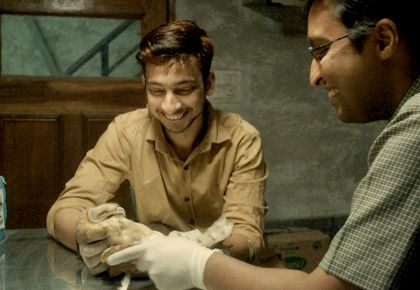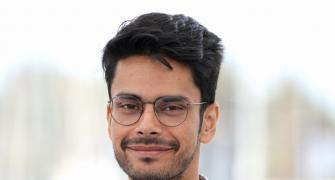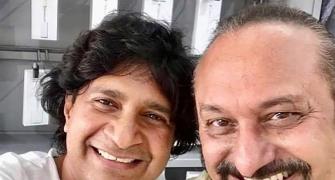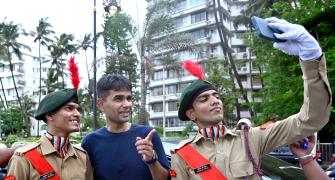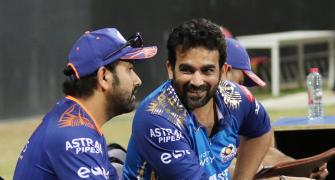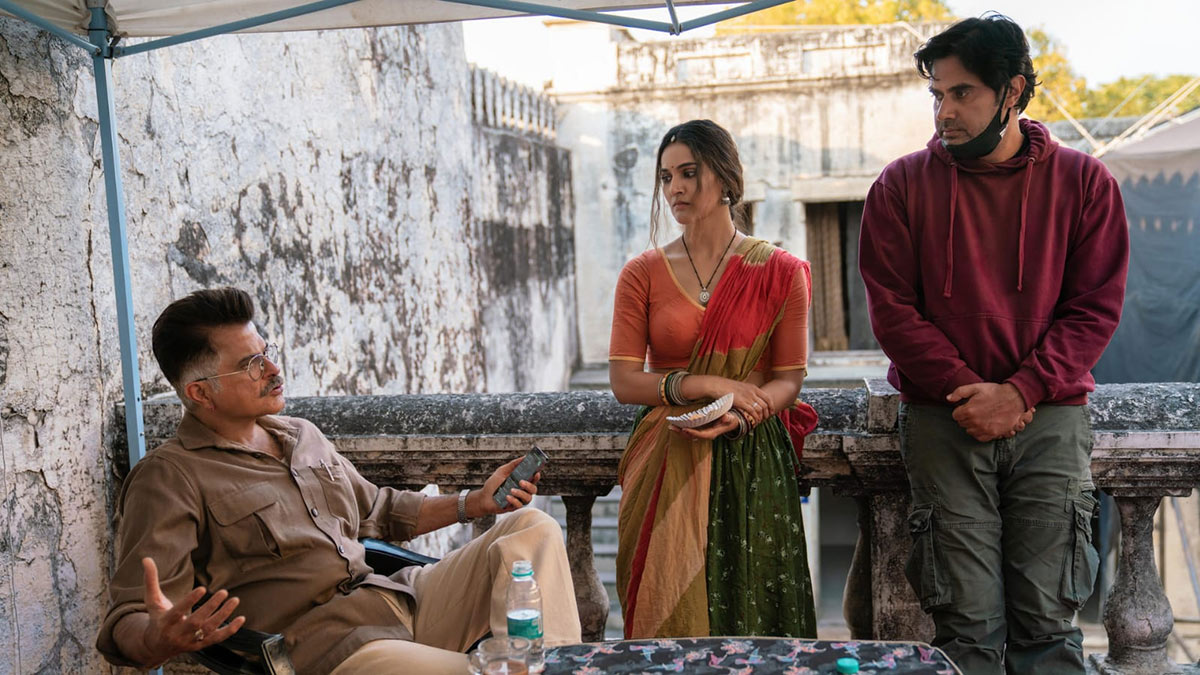'The idea was to show the simultaneity and coexistence of life in the city.'
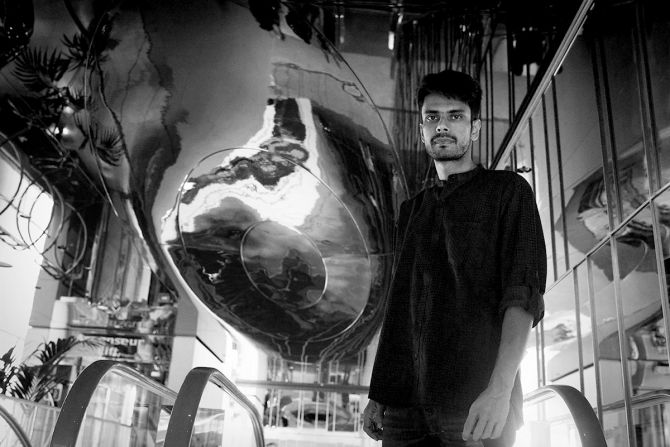
The Cannes film festival saw a slice of India in Shaunak Sen's documentary, All That Breathes, and they liked it so much, it won the L'Œil d'or (Golden Eye) award.
Shaunak looks back at the film's unique story and tells Rediff.com Long Time contributor Aseem Chhabra, "The title of the film All That Breathes comes from the philosophical bedrock of their lives that you cannot have a hierarchical stratification between different lives."
- Part 1 of the Shaunak Sen Interview: 'It's also a love story about two brothers who fall in love with a bird species'
I am curious when you are looking at the lives of your characters, their Muslim identity is there. I didn't see them being religious.
But it comes to play partly because of what's happening in the background, the protests, the riots that you sort of show, without really actually showing.
What was the thought in that? There are also the lovely references to Islamic traditions, the fact that you if you feed these birds, you get some religious credit.
When we began, I was absolutely certain that this was not the sort of film that was directly geared to be a political snapshot of the country.
I have great respect for that kind of film-making but this was not that film.
As we started shooting, I realised that the roots of the brothers' feelings, their respect for non-human life and especially for the kites, was embedded in the colloquial and vernacular culture, that was also influenced by where they live and their religion.
So everything -- from feeding the kites, the meat tossing and thinking that it's connected to washing away your sins -- these are deep cultural practices that have to do with your beliefs.
Their mother was also an influence on them.
The title of the film All That Breathes comes from the philosophical bedrock of their lives that you cannot have a hierarchical stratification between different lives.
But also, of course, there is the more active environment of the city itself in terms of the social.
They are aware people, but are not very politically active.
But one of the wives goes for the protests.
Saud says he can't go for the protests because who will do his job, as the number of birds falling from the skies is increasing.
They were interested in the politics between man and sky, between humans and birds.
It's a different kind of more transcendently attuned form of politics.
I wanted things to exist so you have a sense that the film is about this and about that.
I was interested in giving their story the biggest stage possible because whoever actually finds out about the brothers and their work, usually feels compelled to go and help them financially.
I am sure you were moved enough.
And if you found out afterward that there is a Kickstarter campaign or something, you would inevitably like to contribute.
Many people write to us, 'Main jitna bhi de skata hoon, do hazaar, panch hazaar, dena chahunga.'
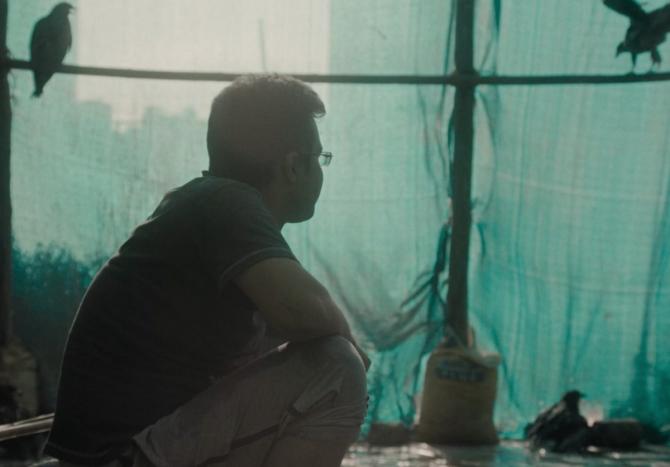
Tell me about how the film's camera style developed. How much of it was just verite happening in front of you?
Cities of Sleep was a raw, gritty, handheld, immersive film, more classical observational and verite where the idea is that you turn up and try to recede into the background, while life itself unfolds, where action gets impacted by things that are happening. And you just keep shooting everything.
You end up with a mountain of 200 hours of footage.
You edit painstakingly and you sculpt out the story from the material you have.
In this case, I was absolutely certain that this would be a more controlled, aestheticized, framed style.
I was interested in developing an observational style which was also languid and poetic.
There is the use of slow-motion and characters talking to the camera.
Even as the camera moves, it's clearly not fully realistic.
At the same time, there's also a strand that is verite.
Going back to the three pillars in the film that I was earlier demarcating for you, there's a bit about animal life in the city, which we developed first with the German DP (Director Of Photography) Ben Bernard, who had come down.
It was a dream to work with him because he shoots the films of (Russian documentary film-maker) Viktor Kosakovskiy.
With him, we developed a style we referred to as life writ large on the canvas of the city.
The idea was to show the simultaneity and coexistence of life in the city.
So, for instance, when you see a turtle, clambering through garbage and looking at traffic going by, what you have is basically two kinds of experiences of life and duration in the same frame.
We could show these dualities of life passing by with two or three elements that would be juxtaposed. That was one form.
The other form was the lyrical poetic style of even more languid camera, like the kites in the sky, or where you see a reflection of a plane in the house in the water.
The third thing was, of course, the brothers' lives which is an observational verite form.
This was something we also evolved with our second Cinematographer Riju Das, who came in after Ben left for a job and couldn't come return to India because of the pandemic.
Every day Salik would bring boxes with the birds in them.
He would come to the tiny claustrophobic basement where the birds would get treated, and then they would get taken to the enclosure on the terrace.
It was a limited pattern of action, limited geography.
This was happening every day and we were shooting for two years.
By now, the brothers and Salik had gotten used to the camera, which is when the best sort of story unfolds.
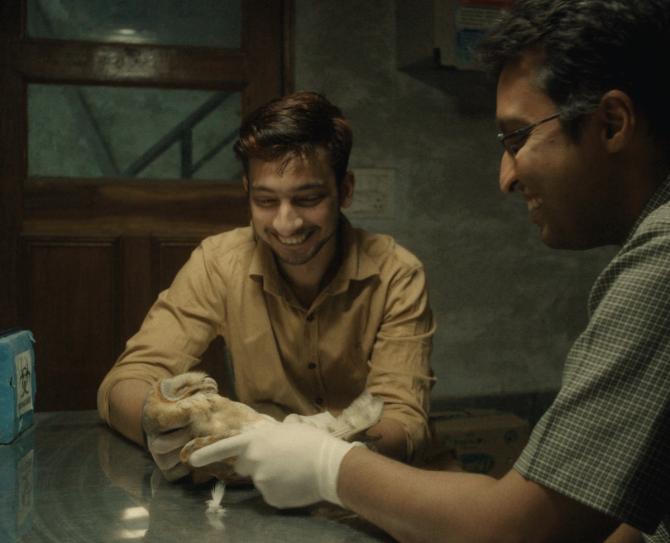
Did you at any stage ask the brothers to do anything or was it all organic?
When you are shooting for two-and-a-half years, if something was about to happen, they would sometimes say, 'Aaj yeh hone wala hai, to aap shoot karlo.'
But if you instruct them directly to say something, it's going to fall flat and be horribly contrived.
If you give people lines, it never ever works.
So it's not like you could literally tell them to say this or that.
Of course, you have cues about what is going to happen and over time, you have a sense of the pulse.
Or sometimes they would come and say, 'Aaj hamie lagta hai yeh wala bird aane wala hai.'
Sometimes they would say, 'Mujhe kuch important bolna hai, bol doon?'
We would say sure, just give us two minutes to set up the camera.
Also, you know trust happens.
Now, it feels like family because we have spent so much time.
There is a kind of intimacy that grows over time.
It's just the comfort level that you have in any relationship.
People don't open up the first day you meet them in any case, and you had the camera also there.
In the first year, I would never have been able to get the material that I got from Nadeem about his personal dissatisfactions, the relationship between the two brothers.
It's only over time that people also give or feel generous, grant you access into the inner recesses of their mind and feelings.
Nadeem is opening up about how he feels a bit stifled, that we shot at the last leg of shooting in 2021.
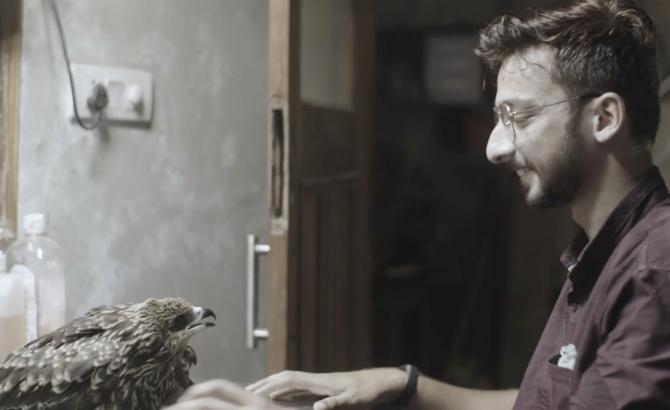
Where do you go with a film like this? I know you can try and find distribution in the US and Europe. Writing With Fire had a wide theatrical release in the US.
I don't think it has happened with any Indian documentary before other than Born into Brothels, but that was not made by Indians. And what about bringing the film to India?
There are two aspects to it.
One is the actual logistical and practical aspect.
The dissemination infrastructure of documentary films is so sparse that it's a genuinely difficult question. And this is coming after Cities of Sleep.
I tried to be as prolific in terms of showing my film across all universities, every festival in India, and in semi-formal screening spaces.
But still, it couldn't find a home on an online platform. This was also in 2015-2016 when there were not so many OTT options.
With this film, I think, especially with the Sundance and Cannes platforms and then the awards, it opens up a lot of doors.
There's far more visibility.
But my aim is to find distributors where it becomes available globally and to everybody in India.
Tell me about your PhD. How did the PhD inform you in terms of making your films?
The PhD is a theoretical work. My supervisor was Ranjani Majumdar.
It is an autonomous, independent project and has nothing to do with the films I have made.
However, I think that there are intuitive connections between film-making and my other work.
I love reading and engaging with ideas.
With Cities of Sleep, I was very interested in French philosopher Jacques Ranciere, who wrote Nights of Labor.
That's how I got very fascinated with the idea of sleep and like how we think of the night.
Similarly, with the new film, my adda swith Maan were super important in starting to think about this subject.
So the interest in the concepts predicates how I start thinking of films. Then, of course, because I am also an absolute film nerd, and a huge cinephile.
But if I wasn't reading as much, I don't think the films would take the shape that they did.
